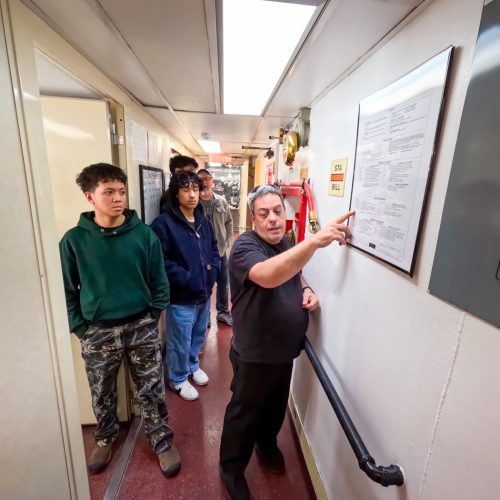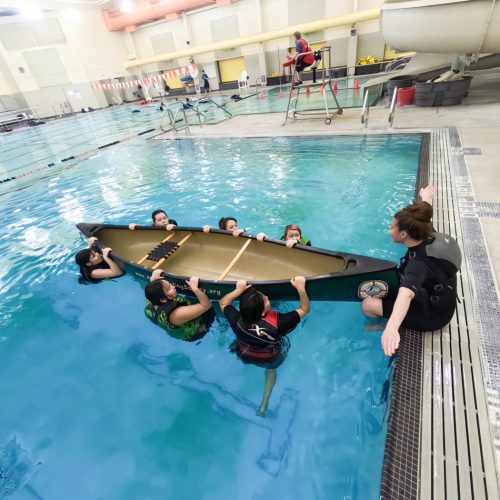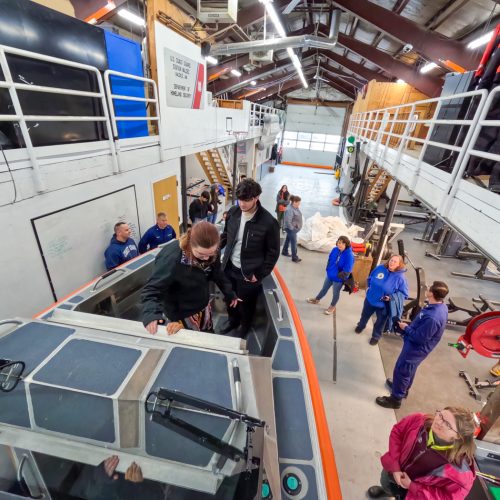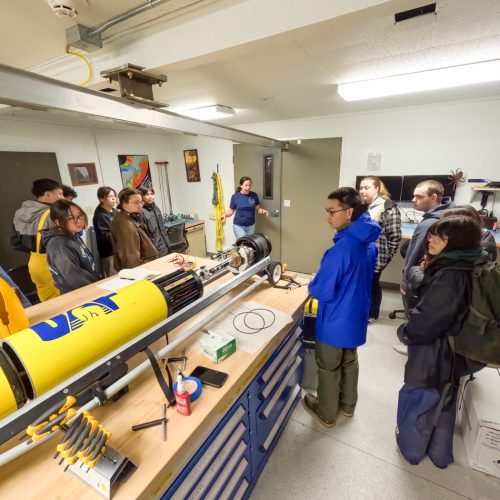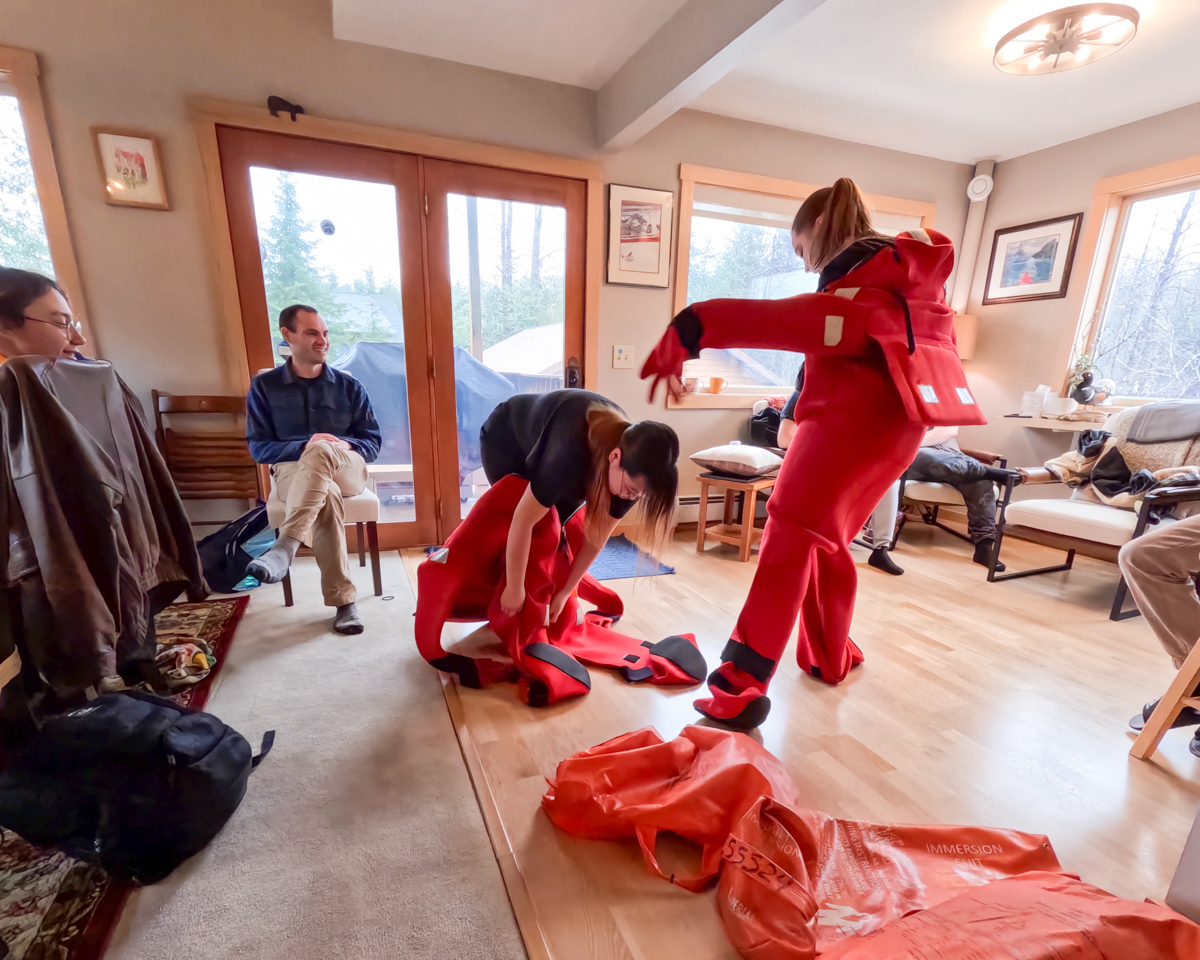
Maritime Trade Intensive: Charting the Course to Maritime Careers
Introduction to Maritime Trades Field Trip: April 28 – May 2, 2025
The Introduction to Maritime Trades field trip, held from April 28 to May 2, 2025, provided students from across Alaska with a hands-on opportunity to explore careers in the maritime industry. The trip began in Anchorage, where students participated in a Boater Safety Class hosted by the Alaska Waterwise program and worked towards earning credentials important to careers on the water like their TWIC and food handler’s cards.
At the outset, students were challenged to use the week to forecast where they might be in eight years. Visualizing desired outcomes is a characteristic of success, and the week provided a wealth of information for them to digest. They were asked to envision themselves in the future and consider how a career in the maritime field might fit into their goals. They also forecasted obstacles they might face and reflected on how they could grow through experience. What training and steps would they need to take to achieve their goals?
The group then traveled to Bear Lake Lodge in Seward, where they continued their training and team-building activities in a more immersive setting. Students explored the Seward Marine Center, attended a lifeboat and Davit class with Kari Anderson, Maritime Department Head at AVTEC, and participated in a maritime-themed escape room at the harbor—all of which deepened their understanding of maritime tools, safety, and teamwork.
Wednesday morning featured built-in fun with immersion suit charades. Students earned points for getting into the suits quickly and then acting out maritime concepts.
In the second half of the trip, students spent the day at AVTEC for an in-depth classroom session covering maritime history, industry sectors, and logistical operations. They also toured the Alutiiq Pride Marine Institute with Robin McKnight, a research facility and shellfish hatchery. McKnight also shared her experience working on the water, having grown up in Seward and worked as crew on tour ships as an interpretive ranger with the National Park Service. She presented her masters thesis work “Women of the Water” comparing women’s experiences working on the water in Alaska and Iceland. Speaking from experience, McKnight framed maritime work like any other career path—each with its challenges, but requiring individuals to rise to the occasion and build support networks for success.
The students were really excited by the experience! “Getting to check the oil on that boat was my favorite part of the week!” and “Seeing the engine room of the ferry has inspired me to learn more about this career path” were just a few comments.
Part of the day was spent at the Seward Marine Center, where students learned about two fascinating maritime careers. First, they met Jenny Grischuk, a marine technician responsible for maintaining underwater gliders and serving as a liaison between crew and researchers. Afterwards, they met a visiting researcher from Hawaii who was conducting studies on humpback whales. Students were excited about the possibility of working in maritime careers in other locations like Hawaii.
A highlight of the visit was the Escape Room Scavenger Hunt organized in the Seward harbor. Students extrapolated clues from four stations in the harbor while learning firsthand about various maritime careers. Clues included a pre-departure checklist aboard a tour boat—from checking engines to changing oil; insights from a woman entrepreneur on boat ownership and business concepts; tips on packing a kayak with proper weight distribution; and strategies behind a sightseeing tour boat’s advertising campaign. For additional fun, students used marine radios to practice communication while working through the clues.
The experience wrapped up in Anchorage with the Boater Safety Exam, compass navigation practice, and student project presentations. The week fostered new skills, sparked career interest, and built lasting connections among students from different regions of Alaska—setting a strong foundation for future learning and collaboration in the maritime field.


